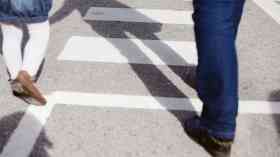Creating the next generation of innovators

Having originally qualified as a Chemical Engineer, I later embarked upon a career as a secondary school maths teacher. In doing so, I became a firm advocate of the use of technology to support the teaching and learning of secondary maths. For learners to be successful future mathematicians it is important that they appreciate the many applications of mathematics, and to be able to recognise its relevance to the real world as early as possible; something that technology can facilitate.
The power of technology
Technology has a powerful effect on the classroom; it has the potential to change both the teacher’s and the learner’s approach to maths, whilst also encouraging understanding. In the UK, the lack of appreciation of the wider application of maths is influencing the number of students who are recognising just what is possible in terms of a future career and how a maths qualification can be put to further use.
Without this contextual knowledge, pupils can sometimes lack the motivation to progress in the subject, failing to realise that maths is so much more than just numbers and equations.
In my view, technology has the power to change this; it can influence how maths is approached in the classroom through means that are just not possible with traditional tools such as the compass, pen and paper. It is clear to see that when learners use technology to undertake a basic maths activity, they are also given the opportunity to be creative, unlock their inquisitiveness for the subject and delve deeper into the task.
A new form of learning
When used appropriately, technology offers the learner the opportunity to take part in experiential learning, engaging them at a more personal level by responding to an individual’s line of enquiry. Take the properties of 2-D and 3-D shapes for example; an element of the curriculum that all pupils are expected to learn. Using a dynamic geometry software programme and interactive whiteboard, learners can bend, stretch and rotate shapes on the board and by doing so they are able to see that no matter how much they manipulate the shape some properties still remain.
Compared to traditional learning techniques, this style encourages the formation of cerebral connections. Consequently, the learner is not simply just remembering the facts but understanding the concept, which is an added value of ICT. As time goes on and more geometry is layered in, learners can build on their existent understanding and begin to consider what happens when lines cross, and discover the properties of other shapes such as circles. Ultimately, through the dynamic learning experience that technology offers, more substantive learning can be achieved.
New developments
So why is the use of technology in maths lessons still not widespread? The barriers can sometimes reside unknowingly with the teachers. Maths is different to science and technology where the knowledge is still evolving in a more publicised way. The discovery of laser technology in the 70s for example was accessible to students undertaking physics A-level and thus became part of the course. Developments in maths are often deemed too complicated or inappropriate to have any relevance at secondary level; therefore some teachers can be reluctant to share exciting developments that would perfectly demonstrate real-world application of mathematical concepts.
However, there are plenty of ideas to inspire learners. Consider computer generated images (CGI), the use of cones and spheres in creating aliens in the popular TV series, Doctor Who, or perhaps think about the computer games that wouldn’t be possible without maths – you can sense the pupil engagement already! Without understanding the power of maths, our future generation may be left behind in the international employment market.
I have recently been working on a European Evaluation project, where I met with learners in the Netherlands and Sweden, and had the opportunity to see first hand the difference in attitudes towards technology and maths combined. The pupils I met with had their own handheld maths technology, usually in the form of powerful graphics calculators; a different culture resides in some European countries, with the expectation that students must have their own handheld maths technology when they begin secondary school.
When utilised well, the effect of this type of technology on the comprehension of STEM related subjects is highly observable. Whilst the UK is rich in technology available to our learners, there is no requirement for schools to insist that pupils purchase a particular ICT tool designed specifically for STEM subjects. In the UK we struggle for this to be the norm and instead are tending to go down the laptop route which can be an expensive method, and not subject specific. This is where we seem to be behind our European neighbours such as France, Germany, Italy, Spain and the Netherlands.
Professional development
Teachers hold the key to change the way maths is taught in the classroom and much of that can hinge upon the professional development that teachers are offered. Members of staff may partake in professional development sessions to learn how to use the technology, but they do not necessarily have the opportunity to learn how to teach specific subjects using technology. Different pedagogy is required for individual subjects and each will have their own subtleties. This is something that needs to be addressed for the use of technology in maths to be successful and widespread.
Time after time, research shows that technology is a catalyst for learning. Pupils should be encouraged to explore maths for themselves, just like the early mathematicians did. In order to develop the future technologies, and compete globally in the market place, our learners need to understand the power of maths and be encouraged to see the broad range of possibilities that maths offers in the real world. When technology first arrived in UK schools over 20 years ago it actually started out in the maths department through the teaching of spreadsheets. So let us claw back the use of technology in maths, and motivate and inspire our learners in the most dynamic way possible.
Biography
Alison Clark-Wilson is head of research and consultancy at the University of Chichester’s Mathematics Centre. Alison is a former head of mathematics and was awarded Advanced Skills Teacher Status (AST) in 1999 specialising in the development and use of ICT tools for mathematical learning. Alison is also chair of the Mathematical Association’s Professional Development Committee, project lead on the University of Chichester TI-Nspire research pilot for Texas Instruments and author of ‘Evaluating TI-Nspire in secondary mathematics classrooms’ ISBN 978-0-948765-47-6.
Latest News
19/12/2025 - 09:54
The Education Committee has expanded its ongoing inquiry into the early years sector to examine how safeguarding can be strengthened in early years settings.
18/12/2025 - 09:25
The UK will be rejoining the Erasmus programme in 2027, following a package of agreements with the EU.
17/12/2025 - 09:31
Ofqual has fined exam board Pearson more than £2 million in total for serious breaches in three separate cases between 2019 and 2023 which collectively affected tens of thousands of students.
16/12/2025 - 09:19
The average funding rates will increase by 4.3% for under 2s, and by almost 5% for 3-and-4-year-olds.
15/12/2025 - 10:30
Local colleges are set to receive £570 million in government funding to expand training facilities in areas such as construction and engineering.







